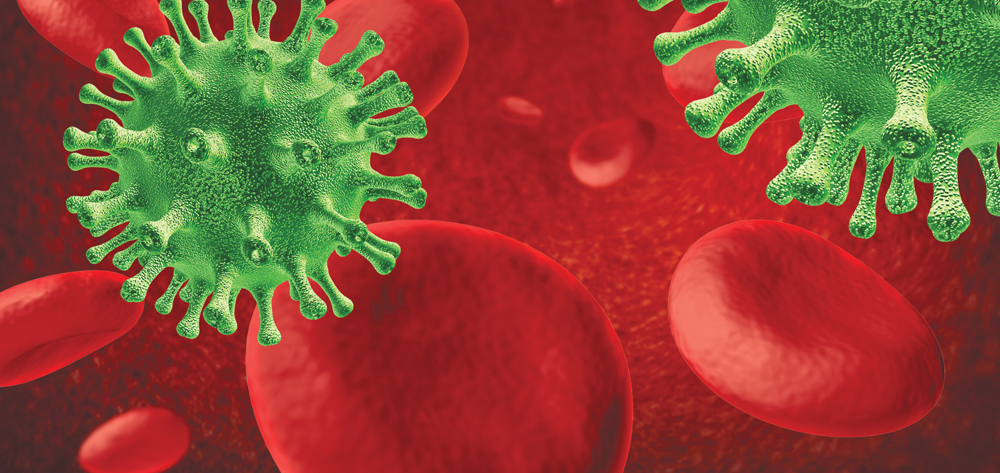Healthcare workers are exposed to blood-borne pathogens through contaminated needlesticks, sharps injuries, and mucous membrane exposures to infectious blood or body fluids of patients. The Centers for Disease Control and Prevention estimates that healthcare workers experience 600,000 to 800,000 exposures to blood annually. Registered nurses sustain an overwhelming majority of these exposures. Splashes to mucous membranes and unintact skin create additional risk in this group.
In April 2001 the Needlestick Safety and Prevention Act went into effect and revised the federal Occupational Health and Safety Administration Bloodborne Pathogen Standard created in 1991.
The risk of contracting human immunodeficiency virus (HIV) infection, hepatitis B, or hepatitis C, in addition to other blood-borne pathogen diseases, persists. Here’s what to do should you sustain a blood-borne pathogen exposure injury:
• Wash the wound thoroughly with soap and water. Remember to flush the mucous membranes with water.
• Alert your supervisor of the incident and complete required documentation per employer policy.
• Identify your source patient, when known. If the source patient has a known blood-borne pathogen disease, this information will be helpful in planning your post-exposure testing and prophylaxis, where applicable. If the source patient is unknown, describe known details of the location where the sharp was found or other details of the possible background of the sharp or fluid. There’s no value in testing the sharp; don’t take the exposed sharp with you because this will place others at risk for exposure as well. It’s important to know the source patient’s physician. In some states, the physician or his designee must obtain consent from the source patient for testing to occur. The source patient’s physician may need to offer pre- and post-testing counseling to the source patient.
• Log the brand and manufacturer of the device (required by law) that caused the injury, if known. When feasible, take this information with you when you start treatment.
• Immediately report to employee health, the emergency department, or a designated location in your facility for evaluation and treatment of your injury.
• Take post-exposure prophylaxis (PEP). PEP may be ordered if determined necessary during your evaluation. PEP for HIV exposure ideally should be started within 2 hours of exposure, so don’t delay being evaluated.
• Be tested after exposure through blood work and other laboratory testing. Additional laboratory testing may be required if you’re taking PEP. Initial PEP for HIV exposure is taken for 28 days, with intermittent laboratory testing dependent on the medications prescribed. Be sure to follow up as directed and report any adverse effects of the medications.
• Comply with follow-up testing. After laboratory testing of you and the source patient, a schedule for follow-up laboratory testing should be planned. It’s critical to follow up with testing and counseling as recommended.
Exposure to blood-borne pathogens is one of the most deadly hazards that registered nurses and other healthcare professionals face. Over 80% of these injuries can be prevented through the use of safety-engineered devices, education and training, and work practice controls. After an injury, it is important to objectively review the mechanism of injury. Avoid placing blame for the injury. What was the cause of the injury? Could the injury have been prevented through engineered controls, environment changes, and education? Was the splash anticipated and proper eye protection or face protection worn?
The United States has made great progress regarding exposure to blood-borne pathogens, mainly due to the support of legislation to reduce the number of blood-borne pathogen injuries. ANA is proud to have led the fight for state and federal legislation. ANA continues to educate nurses about the issue of blood-borne pathogen injuries and continues to strive toward prevention of these injuries. In addition, education about what to do if a blood-borne pathogen exposure occurs is important to those at risk for suffering such an injury.
Selected references
American Nurses Association. Safe needles save lives: caring for those who care. Available at: www.needlestick.org. Accessed May 16, 2007.
Centers for Disease Control and Prevention. NIOSH alert; preventing needlestick injuries in health care setting. Available at: www.cdc.gov/niosh/2000-108.html#1. Accessed May 16, 2007.
Occupational Health and Safety Administration. Bloodborne pathogens and needlestick prevention: post-exposure evaluation. Available at: www.osha-slc.gov/SLTC/bloodbornepathogens/postexposure.html. Accessed May 16, 2007.
Nancy L. Hughes, MS, RN, is the Director of ANA’s Center for Occupational and Environmental Health.


















